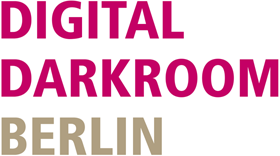FAQ – Frequently asked questions
Analogue vs. digital: Which is better, an analogue print or a digital fine art print on baryt paper?
You have analogue picture material on film and you would like to create fine art prints from it and consider whether you would like to have these produced as classic prints in the chemical development process or as fine art prints printed by us?
A perfectly executed fine art print from a pre-processed scan of a negative is superior to an analogue print from a negative in many ways. Everything else is a myth. We have been in the analogue darkroom business for over 20 years and have the expertise to put it so clearly.
In a calibrated digital workflow, in contrast to the analogue process, all image parameters such as brightness, contrast, details in the shadows and highlights etc. are precisely defined in advance. The final result on a specific paper can be simulated on the monitor (soft proof). Random deviations are thus excluded; test strips are no longer necessary.
Analogue problems such as blurring in the image corners, as caused by enlarging lenses, or contrast deviations within individual prints of an edition due to changes in developer condition, room temperature, etc. are not present. The analog trial-and-error procedure is finally behind us. The two-part digital procedure – targeted post-production of the scan in Lightroom and Photoshop and the subsequent Fine Art Print – is the far more precise method of producing prints.
Each print can be reproduced in exactly the same way, e.g. for the production of editions, at any time. Only with the digital workflow can the result be achieved in a way that was once desired in the old darkroom, the elimination of chance. And yet the final print retains the characteristics, the charm of the film, the grain and the analogue look.
We are the experts for such prints.

